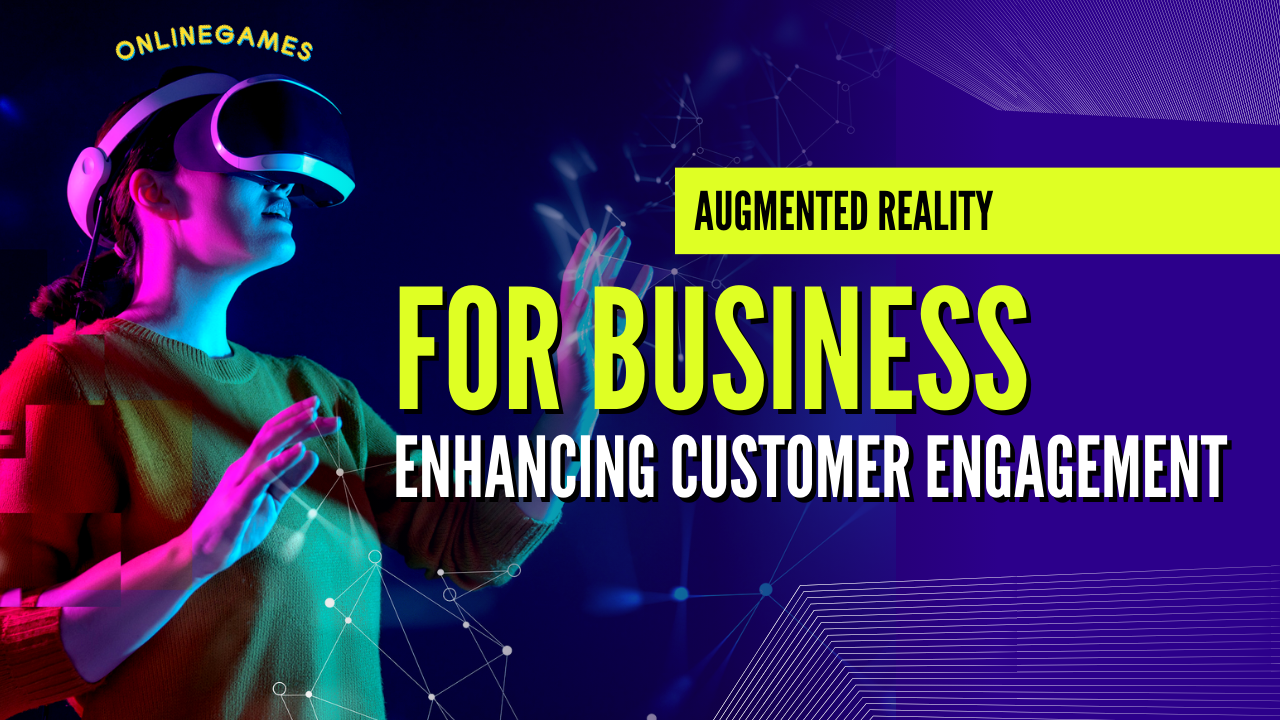In the ever-evolving landscape of digital transformation, Augmented Reality (AR) has emerged as a pivotal technology for businesses seeking to enhance customer engagement and improve operational efficiency. AR overlays digital information in the real world, providing a unique and interactive experience that can revolutionize how businesses interact with their customers. This article explores the various applications of AR in business, its benefits, and how it can be leveraged to create a more engaging and interactive customer experience.
Understanding Augmented Reality
Augmented Reality combines real-world environments with digital overlays, accessible through devices like smartphones, tablets, and AR glasses. Unlike Virtual Reality (VR), which immerses users in a completely virtual environment, AR enhances the real world by adding digital elements that can be interacted with. This technology uses cameras, sensors, and software to integrate these elements seamlessly into the user’s view, providing a mixed-reality experience that is both practical and engaging.
Applications of Augmented Reality in Business
1. Retail and E-Commerce
Virtual Try-Ons: One of the most significant applications of AR in retail is virtual try-on experiences. Customers can use their smartphones or AR mirrors to see how clothing, accessories, or even makeup will look on them before making a purchase. This not only enhances the shopping experience but also reduces return rates and increases customer satisfaction.
Product Visualization: AR allows customers to visualize products in their own space. For example, IKEA’s AR app lets users see how furniture will look in their homes, helping them make more informed purchasing decisions. This application is particularly beneficial for home decor, real estate, and automotive industries, where seeing the product in context is crucial.
Interactive Product Information: Retailers can use AR to provide detailed product information and demonstrations. By scanning a product with their device, customers can access videos, user manuals, and 3D models that enhance their understanding of the product and its features.
2. Marketing and Advertising
AR Advertising Campaigns: Brands are increasingly using AR in their advertising campaigns to create interactive and memorable experiences. For instance, an AR campaign might allow customers to scan a product or a QR code to unlock a virtual experience, such as a game, a 3D animation, or a discount voucher.
Interactive Packaging: AR can transform ordinary packaging into an interactive platform. By scanning the package, customers can access additional content such as videos, recipes, or promotional offers, enhancing the overall brand experience and creating a stronger connection with the product.
Location-Based Marketing: AR can be used for location-based marketing to provide customers with targeted offers and information based on their geographical location. For example, a customer walking past a store might receive a notification with a special offer or an invitation to experience an AR demo of the latest products.
3. Training and Education
Employee Training: AR provides an immersive and hands-on training environment for employees, enabling them to learn complex tasks more effectively. For example, AR can simulate machinery operations or customer service scenarios, allowing employees to practice in a risk-free setting.
Customer Education: Businesses can use AR to educate customers about their products or services. For instance, a customer buying a new appliance might use an AR app to see a detailed 3D model of the product, learn about its features, and receive setup instructions, enhancing their understanding and confidence in using the product.
4. Customer Support
Remote Assistance: AR can facilitate remote assistance by allowing customer support agents to see what the customer sees and provide real-time guidance. This is particularly useful for troubleshooting technical issues or providing detailed instructions for assembling or repairing products.
Interactive Manuals: AR can replace traditional manuals with interactive, step-by-step guides. Customers can use their devices to view animated instructions overlaid on the actual product, making it easier to follow complex procedures and reducing the need for customer support.
5. Events and Experiences
Augmented Reality Events: Businesses can use AR to enhance live events by providing interactive experiences that engage attendees. For example, at a trade show, an AR app might allow visitors to explore 3D models of products, access additional information, and participate in virtual demos.
Virtual Tours: AR can provide virtual tours of facilities, products, or destinations, allowing customers to explore and interact with them from anywhere in the world. This is particularly beneficial for industries like real estate, tourism, and education, where providing an immersive experience can significantly impact decision-making.
Benefits of Augmented Reality for Businesses
Enhanced Customer Engagement
Augmented Reality offers a unique and engaging way to interact with customers, creating memorable experiences that can differentiate a brand from its competitors. By providing interactive and immersive content, businesses can capture customers’ attention and encourage them to spend more time exploring products and services.
Improved Customer Experience
AR enhances the customer experience by providing additional value and convenience. Whether it’s through virtual try-ons, interactive product demos, or detailed instructions, AR helps customers make more informed decisions and improves their overall satisfaction with the brand.
Increased Sales and Conversion Rates
By providing customers with a more interactive and informative shopping experience, AR can help increase sales and conversion rates. Virtual try-ons and product visualizations reduce uncertainty and boost confidence in purchasing decisions, leading to higher sales and lower return rates.
Cost Savings and Efficiency
AR can reduce costs associated with training, customer support, and product returns. For example, AR-based training programs can reduce the need for physical resources and travel, while interactive manuals and remote assistance can decrease the number of support calls and service visits.
Competitive Advantage
Incorporating AR into business strategies can provide a significant competitive advantage by positioning the brand as innovative and customer-centric. Businesses that embrace AR technology are likely to attract tech-savvy customers and stand out in a crowded market.
Implementing Augmented Reality in Your Business
Identify Key Opportunities
Start by identifying areas where AR can add value to your business. Consider the customer journey and look for opportunities to enhance engagement, improve the shopping experience, or streamline operations. Focus on use cases that align with your business goals and customer needs.
Choose the Right Technology
Select AR technology that best suits your needs and budget. This might include developing a custom AR app, using existing AR platforms like ARKit or ARCore, or incorporating AR features into your existing mobile or web applications. Consider factors such as compatibility with devices, ease of use, and scalability.
Develop Engaging Content
The success of AR in business largely depends on the quality of the content. Invest in creating high-quality 3D models, animations, and interactive experiences that provide real value to your customers. Work with experienced developers and designers to ensure your AR content is engaging, user-friendly, and aligned with your brand identity.
Test and Optimize
Before launching your AR initiative, conduct thorough testing to ensure it works seamlessly and provides a positive user experience. Collect feedback from users and make necessary adjustments to improve functionality and engagement. Continuously monitor performance and update content to keep it fresh and relevant.
Promote Your AR Experience
Promote your AR experience through various channels, such as social media, email marketing, and in-store promotions. Educate your customers on how to use the AR features and highlight the benefits they offer. Use analytics to track user engagement and measure the impact on your business.
Embracing the Power of Augmented Reality
Augmented Reality is transforming the way businesses interact with their customers, offering new possibilities for engagement, education, and support. By integrating AR into their strategies, businesses can create more immersive and interactive experiences that captivate customers and drive growth. As AR technology continues to evolve, the opportunities for innovation and differentiation will only expand, making it an essential tool for businesses looking to stay competitive in the digital age.










